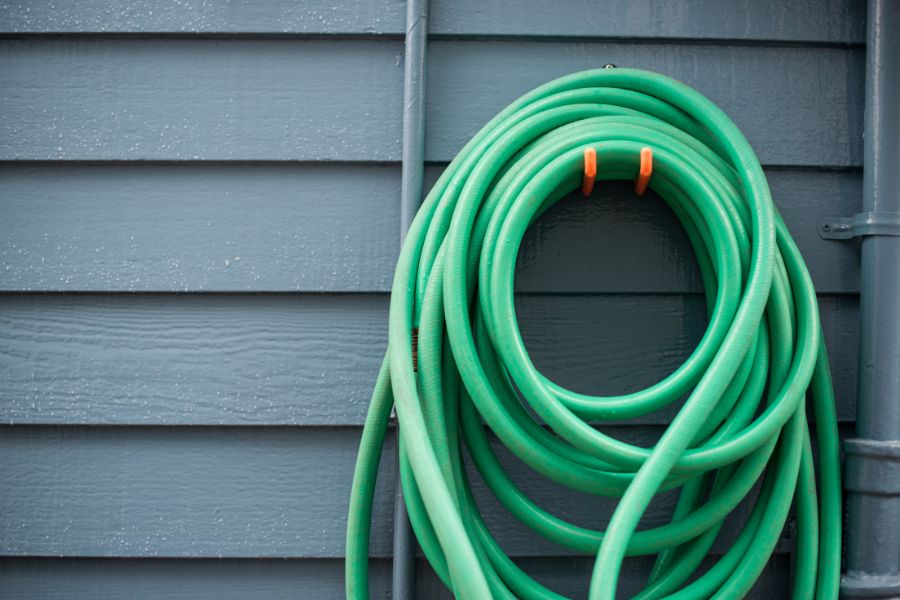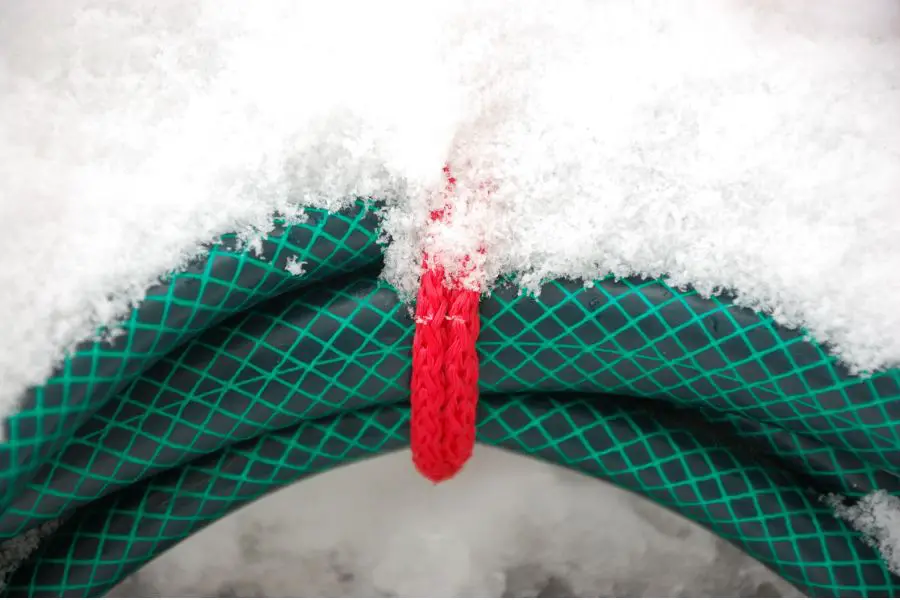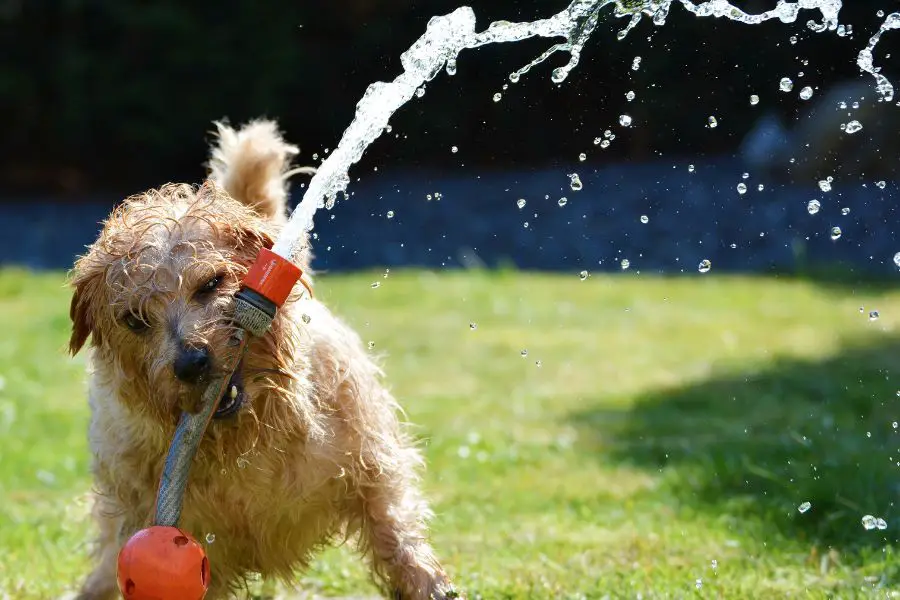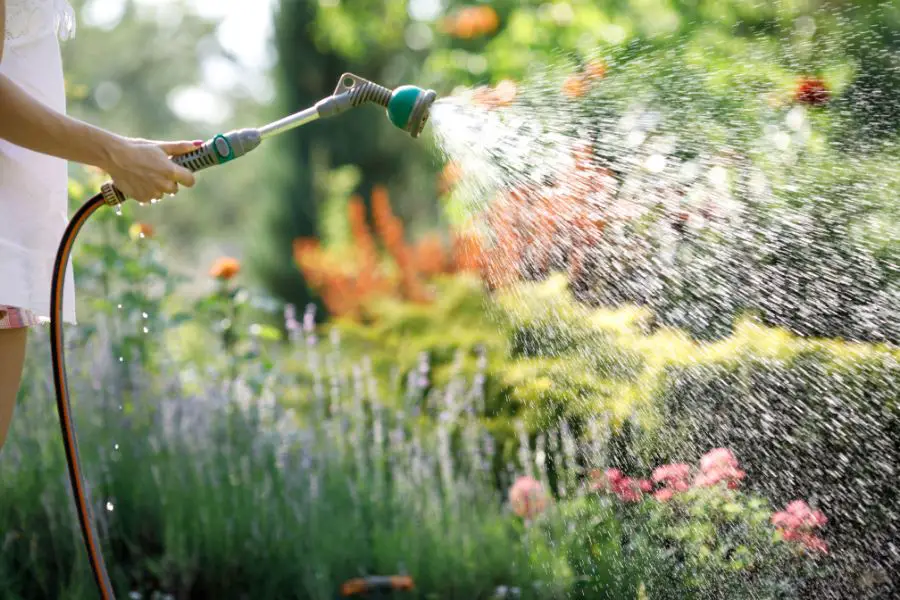Do you love spending time in your garden, tending to plants and enjoying the beauty of nature? If so, you know the importance of a reliable garden hose. It’s an essential tool for watering plants, cleaning outdoor spaces, and keeping your garden thriving.
However, garden hoses are prone to wear and tear, which can significantly shorten their lifespan. In this article, we will explore some practical tips on how to extend the life of a garden hose, ensuring its longevity and optimal performance.

How to Extend the Life of a Garden Hose
01. Choose a High-Quality Garden Hose
When it comes to selecting a garden hose, investing in a high-quality one can make a significant difference in its lifespan. Opt for hoses made of durable materials like rubber or reinforced vinyl. These materials are more resistant to kinks, punctures, and leaks, ensuring that your hose will last longer. Additionally, consider the hose’s thickness, as thicker hoses tend to be more durable and less prone to damage.
02. Proper Storage
Proper storage is crucial for preserving the life of your garden hose. Leaving it exposed to harsh weather conditions, such as extreme heat or cold, can cause the material to degrade quickly. To protect your hose, store it in a cool, dry place when not in use. Consider using a hose reel or a hanger to prevent tangling and kinking. By storing your garden hose correctly, you’ll shield it from unnecessary damage and prolong its lifespan.
03. Avoid Overexposure to Sunlight
Excessive exposure to sunlight can be detrimental to the longevity of your garden hose. UV rays can cause the hose material to become brittle and prone to cracking. Whenever possible, try to position your hose away from direct sunlight. If you need to use it in a sunny area, consider using a hose reel with a built-in cover or invest in a hose specifically designed to withstand UV rays. Taking these precautions will help protect your garden hose from sun damage and ensure its durability.
04. Proper Handling and Use
The way you handle and use your garden hose can significantly impact its lifespan. Avoid dragging the hose across rough surfaces or sharp edges, as it can cause abrasions and punctures. Instead, gently coil the hose after each use to prevent kinks and tangles. When watering plants, choose a nozzle or sprayer with adjustable settings, allowing you to control the water pressure and minimize strain on the hose. By handling and using your garden hose with care, you can avoid unnecessary damage and extend its life.
05. Regular Inspection and Maintenance
Regular inspection and maintenance are essential for identifying and addressing any issues with your garden hose promptly. Check for leaks, cracks, or signs of wear and tear regularly. If you notice any problems, repair them immediately using hose repair kits or replace damaged sections. Additionally, ensure that the fittings and connectors are tight and secure to prevent leaks. By proactively inspecting and maintaining your garden hose, you can catch problems early on and prevent further damage.

06. Winter Care
Winter can be particularly harsh on garden hoses. Freezing temperatures can cause the water inside the hose to expand, leading to cracks and bursts. To protect your hose during winter, make sure to drain it completely of water before storing it. Disconnect the hose from the spigot and allow any residual water to drain out completely. Store the hose in a frost-free location to prevent freezing. By taking these precautions, you can avoid winter-related damage and ensure your garden hose remains in excellent condition.
07. Avoid Chemical Exposure
Exposing your garden hose to harsh chemicals, such as pesticides or cleaning agents, can deteriorate its material and shorten its lifespan. Avoid using the hose for chemical applications unless it is specifically designed for that purpose. Additionally, after each use, flush out the hose with clean water to remove any chemical residue. By preventing chemical exposure, you’ll preserve the integrity of your garden hose and extend its life.
08. Protect from Pests and Critters
Pests and critters, such as rodents, can cause damage to your garden hose by chewing through the material. To protect your hose, consider using a hose guard or wrapping it with a mesh cover. These protective measures will create a physical barrier and prevent pests from accessing and damaging the hose. By keeping pests at bay, you can ensure the longevity of your garden hose.
09. Avoid Excessive Water Pressure
Excessive water pressure can put unnecessary strain on your garden hose, leading to leaks, bursts, or hose failure. Use a pressure regulator to control the water pressure and prevent it from exceeding the recommended limit for your hose. By avoiding excessive water pressure, you’ll protect your garden hose from damage and extend its lifespan.
10. Store Indoors during Winter
If you live in an area with extremely cold winters, it’s best to store your garden hose indoors during the winter months. Find a suitable storage space, such as a basement or garage, where the temperature remains above freezing. Storing the hose indoors will prevent it from being exposed to freezing temperatures, reducing the risk of cracks and damage. Remember to drain the hose thoroughly before storing it to prevent any residual water from freezing.
11. Rinse and Dry After Use
After each use, take the time to rinse your garden hose with clean water to remove any dirt, debris, or chemicals. Let the hose dry completely before storing it to prevent the growth of mold or mildew. Moisture can weaken the hose material over time, so ensuring it is thoroughly dry before storage is essential for its longevity.
12. Replace Washers and O-Rings
Washers and O-rings are crucial components of your garden hose’s fittings and connectors. Over time, they can wear out or become damaged, leading to leaks. Regularly check and replace these small but essential parts to maintain a tight and leak-free connection. By replacing washers and O-rings as needed, you’ll prevent water wastage and prolong the life of your garden hose.

Fixing Garden Hose Damage
Assess the Damage
If your garden hose has suffered damage, it’s important to assess the extent of the problem before attempting any repairs. Look for visible signs of wear, such as cracks, leaks, or punctures. Identify the location of the damage and determine if it’s a minor issue that can be fixed or if the hose needs replacement. Assessing the damage will help you determine the best course of action.
Repairing Small Leaks
If you have discovered small leaks in your garden hose, you may be able to fix them with simple repairs. Start by cutting out the damaged section of the hose using a sharp knife. Ensure that the cut is clean and straight. Next, install a hose repair connector or mender, which is available at most garden supply stores. Follow the manufacturer’s instructions to securely attach the connector to the hose ends, creating a tight seal. Test the repaired section for leaks by turning on the water. If there are no leaks, you have successfully fixed the hose.
Patching Holes or Punctures
For holes or punctures in your garden hose, you can use a patching kit specifically designed for hose repairs. Clean the damaged area thoroughly and let it dry completely. Apply the patching material over the hole, following the instructions provided. Ensure that the patch covers the entire damaged area and press it firmly to create a secure bond. Allow the patch to cure as recommended before using the hose. Once cured, check for any leaks and test the repaired section by running water through it.
Replacing Fittings and Connectors
Sometimes the damage to your garden hose may be localized to the fittings and connectors. If you notice leaks or a loose connection at these points, it’s a good idea to replace them. Start by unscrewing the old fittings or connectors using pliers or a wrench. Clean the threads of the hose and inspect them for any damage. Purchase new fittings or connectors that match the size and type of your hose. Apply plumber’s tape to the threads of the new fittings to ensure a tight seal. Screw the new fittings or connectors onto the hose and tighten them securely. Test the connections for leaks and make any adjustments if necessary.

How to Buy New Hose? What to Look For
Consider the Length and Diameter
When purchasing a new garden hose, consider the length and diameter that will best suit your needs. Longer hoses are convenient for reaching distant areas of your garden, while shorter ones are more manageable for smaller spaces. As for diameter, a wider hose will allow for higher water flow, which can be beneficial for tasks such as filling large buckets or watering large areas. However, keep in mind that wider hoses may also be heavier and more challenging to maneuver.
Choose the Right Material
Garden hoses are available in different materials, and each has its advantages and disadvantages. Rubber hoses are highly durable and resistant to kinks and punctures. They can withstand extreme temperatures and are less likely to crack under sunlight exposure. Vinyl hoses, on the other hand, are lighter and more affordable but may be more prone to kinking and damage. Consider your specific needs and budget when selecting the material for your new hose.
Look for Durability Features
To ensure the longevity of your new garden hose, look for additional durability features. Hoses with reinforced layers, such as those with mesh or fabric reinforcement, are more resistant to kinks and punctures. Hoses with crush-proof fittings can withstand accidental crushing or heavy objects rolling over them. These features contribute to the overall durability of the hose, making it a worthwhile investment.
Check for Warranty
Before making a final decision, check if the hose comes with a warranty. A warranty provides peace of mind and indicates that the manufacturer stands behind the quality of their product. Read the warranty terms and conditions carefully to understand what is covered and for how long. Choosing a hose with a warranty can be beneficial in case of unexpected issues or premature damage.
Consider the Hose’s Weight
The weight of the hose is an important factor to consider, especially if you anticipate carrying or moving it frequently. Heavier hoses can be more challenging to handle, especially for individuals with limited strength or mobility. If portability is a priority for you, consider a lightweight hose without compromising on quality and durability.
Look for Tangle-Resistance
Tangling is a common frustration when using garden hoses. Look for hoses that are specifically designed to be tangle-resistant. These hoses are usually constructed with innovative materials or layered designs that reduce tangling and make them easier to coil and store.
Consider Your Watering Needs
Finally, consider your specific watering needs when choosing a new garden hose. If you have high water pressure or require precise watering control, opt for hoses with adjustable nozzles or sprayers. These features allow you to customize the water flow and pattern according to your needs. Additionally, hoses with multiple spray patterns or attachments can offer versatility for various gardening tasks.
Conclusion
A well-maintained garden hose can serve you faithfully for many years, providing the necessary water supply for your gardening needs. By following these tips, you can extend the life of your garden hose, ensuring its durability and optimal performance. Remember to invest in a high-quality hose, store it properly, handle it with care, and perform regular maintenance. With a little attention and proactive care, your garden hose will remain a reliable companion throughout your gardening adventures.
Read More : Zucchini Leaves Turning Brown ( 7 Reasons + Solutions)





